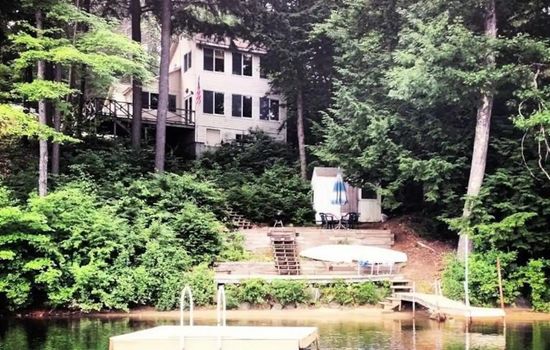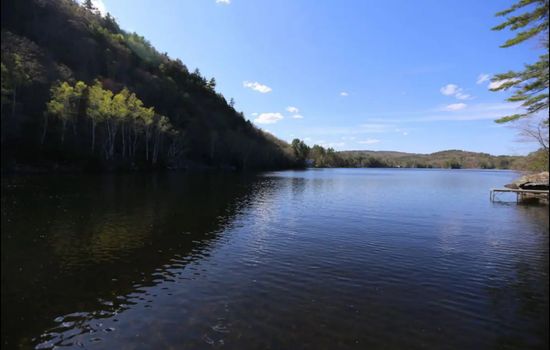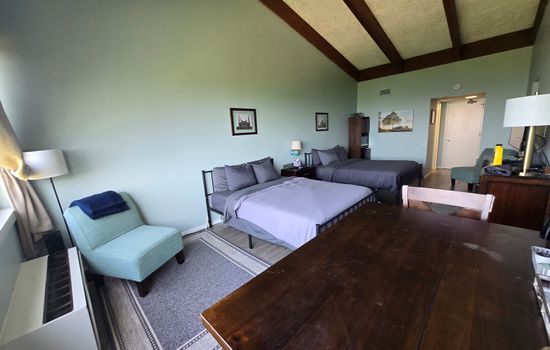The Carriage Barn Visitor Center is open from 10:00 AM to 5:00 PM, Friday to Tuesday, from Memorial Day weekend to October 31.
There is no entrance fee to visit Marsh-Billings-Rockefeller National Historical Park. However, guided tours of the Mansion require a fee: $9 for adults, $5 for seniors, and $1 for children under 16.
From Montpelier, take I-89 South to VT-12, then head south towards Woodstock, turning west just before the village. Immerse yourself in rolling hills, historic landscapes, and a conservation legacy.
Parking is at the Billings Farm and Museum lot, with no specific size restrictions mentioned for RVs or motorcycles. No overnight parking. Free parking available. Disabled parking pass allows parking at the Carriage Barn Visitor Center.
Accessibility & permits
Emergency
- Cell service availability:None
Information not accurate?
Help us improve by making a suggestion.
Marsh-Billings-Rockefeller National Historical Park, situated just northwest of the charming village of Woodstock, Vermont, is a haven of conservation history and breathtaking natural beauty. This park, the only national park in Vermont, unfolds across more than 600 acres of meticulously managed landscapes, featuring carriage roads, trails, and a variety of ecosystems.
As you wander through the park, you are surrounded by the majesty of 400-year-old hemlocks and the vibrant canopy of sugar maples. The landscape is dotted with rambling stone walls and covered bridges, evoking a deep sense of history and stewardship. The George Perkins Marsh Boyhood Home, a National Historic Landmark, stands as the architectural centerpiece, its Late Victorian splendor a testament to the transformative vision of Frederick Billings.
The park’s trails, such as those leading to the scenic viewpoints and the serene pond in the high valley, offer ample opportunities to connect with nature. In the spring, the air is filled with the sweet scent of blooming flowers, while autumn brings a kaleidoscope of colors as the leaves change. Summer afternoons are perfect for guided tours of the mansion and its gardens, which showcase a significant collection of Hudson River School artists.
Nearby, the Billings Farm & Museum, a working dairy farm and heritage museum, provides a glimpse into rural Vermont life. The village of Woodstock itself is a treasure trove of artisan shops, gourmet eateries, and historic charm. For those seeking more adventure, local outfitters offer canoe tours and hiking excursions that allow you to fully immerse yourself in the park’s natural splendor.
Special events such as summer concerts and ranger-led tours enhance the park’s appeal, making it an ideal destination for those who appreciate history, nature, and the finer aspects of rural life. Whether you are drawn to the park’s rich conservation history, its stunning landscapes, or the quaint allure of its surroundings, Marsh-Billings-Rockefeller National Historical Park is a must-visit for any discerning traveler.
- Area (mi²)
- 1
- Established year
- 1992
Top 3 Facts about Marsh‑Billings‑Rockefeller National Historical Park
The park is home to the oldest continuously scientifically managed forest in the United States, with some hemlocks dating back over 400 years.
In this verdant oasis, white-tailed deer and eastern chipmunks roam amidst wooded areas and open fields. Barred owls and wood ducks inhabit the wetlands, while black bears emerge from their dens in early summer. Fishers and porcupines add to the nocturnal allure, and monarch butterflies flutter through the gardens. The lake is home to painted turtles and a variety of fish, making each hike a vibrant tapestry of wildlife and natural beauty.
In this verdant landscape, a pond at the heart of the high valley reflects the serene beauty of the surrounding conservation area, with trails winding through over 600 acres of diverse ecosystems and scenic viewpoints. The area’s carriage roads and trails offer glimpses of a professionally managed forest, a testament to early conservation efforts.
Family programs
- Junior Ranger
- Workshops & Hands-on Activities
- Scavenger Hunts
- Arts & Crafts
Travel Tips
Plan Ahead
Plan a few days in autumn to explore the park’s trails and historic sites. Arrive via Route 12, park near the visitor center. Anticipate mixed terrain and rest often. Visit during the Woodchuck Hill Open House for a unique experience. Pack meals, as options are limited. Enjoy the fall foliage.
Pack Appropriately
Pack layers for changing weather, sturdy footwear, and a waterproof bag. Bring a map, sunscreen, bug spray, and a first aid kit. For longer stays, include camping gear, a headlamp, and water purification tablets. Check the season for warm or cold gear.
Respect Wildlife
Keep a safe distance from wildlife, at least 25 yards, to avoid stressing animals. Never feed them, and dispose of trash properly to preserve natural habitats. Stay on designated trails and respect the environment.Enjoy the unique flora and fauna without disruption.
Stay Informed
Stay on marked trails, keep a safe distance from wildlife, and monitor weather conditions. Follow signs and park rules. For emergencies, call 911 or park authorities. Stay hydrated and aware of your surroundings.
Seasons
In spring, as temperatures rise to the 50s and 60s, witness blooming landscapes and attend Winter Working Woodlands Workshops. Hike 20 miles of trails, explore carriage roads, and enjoy ranger-led programs from May to October. Ideal for outdoor enthusiasts, with mild weather and vibrant scenery.
Explore lush gardens and historic grounds from May to October, with temperatures in the 70s and 80s. Enjoy Garden Day in August, featuring workshops and wellness activities amidst warm summer weather. Ideal for outdoor enthusiasts seeking a rich historical and natural experience.
Experience autumn’s vibrant hues in late September to early October, with temperatures in the 40s-60s°F. Enjoy crisp air, scenic hikes, and the annual Woodchuck Festival, a celebration of local heritage and harvest. Ideal for leaf-peeping and immersive outdoor experiences.
Experience the serene beauty of winter from December to March, with temperatures around 25°F. Crisp air, snow-covered landscapes, and fewer crowds make it an ideal time for a tranquil retreat, though cold and potential snowstorms may require careful planning.
Information not accurate?
Help us improve by making a suggestion.
Where to stay
Frequently Asked Questions
Ready to dive into what Marsh‑Billings‑Rockefeller National Historical Park has to offer? Let’s tackle some of the burning questions you might have as you plan your visit!
-
The closest city to the park is Woodstock, Vermont, which is located just southeast of the park along Vermont Route 12.
-
The easiest hiking trails are the carriage roads, which are wide, smooth, and easy to follow. These trails, such as those starting on Mountain Road, offer a gentle walk through the beautiful forest without the steep segments found on other trails.
-
Dogs must be on a leash no longer than 6 feet at all times. This rule applies year-round, including when hiking and during winter when using multi-use trails. Retractable leashes that extend beyond 6 feet are not allowed.
-
Yes, parking is free. There are two separate parking lots, one main lot and an overflow lot, both available at no cost. Accessible parking is also available next to the mansion.
-
You can hike or horseback ride on over 25 miles of carriage roads and trails, including those established by Frederick H. Billings in the late 19th and early 20th centuries. The park offers guided tours, including a Civil War Home Front Walking Tour, and various programs for kids and families from May to October. You can also view wildlife, see legacy trees like a 450-year-old hemlock, and explore farming exhibits and bronze sculptures.








